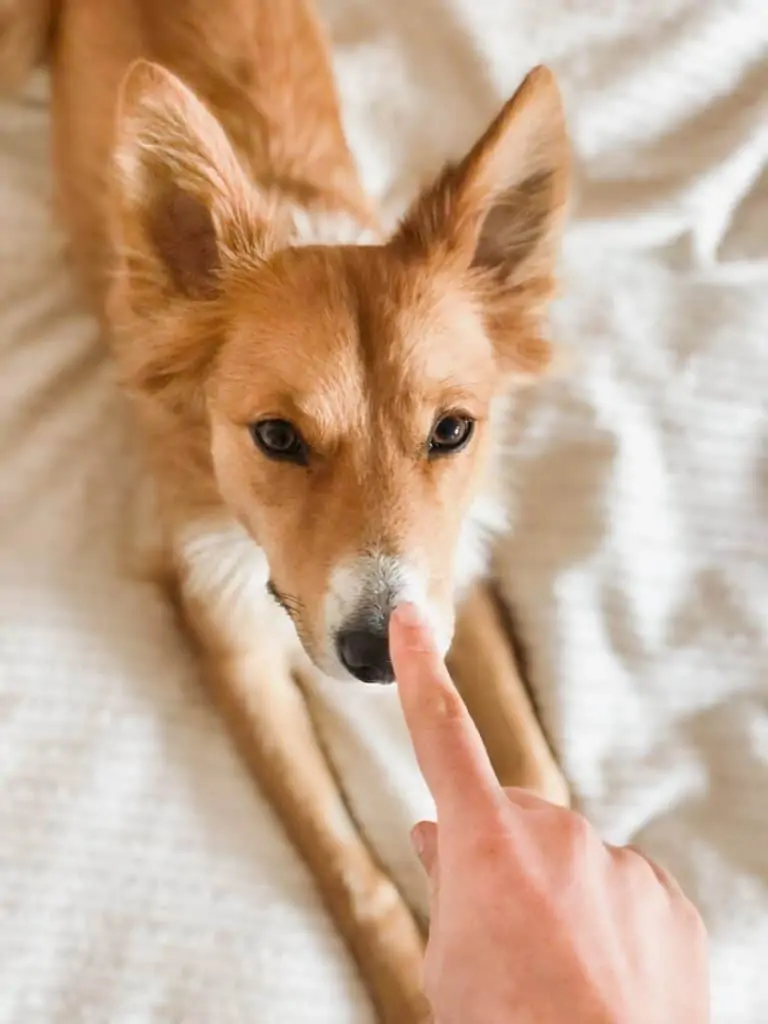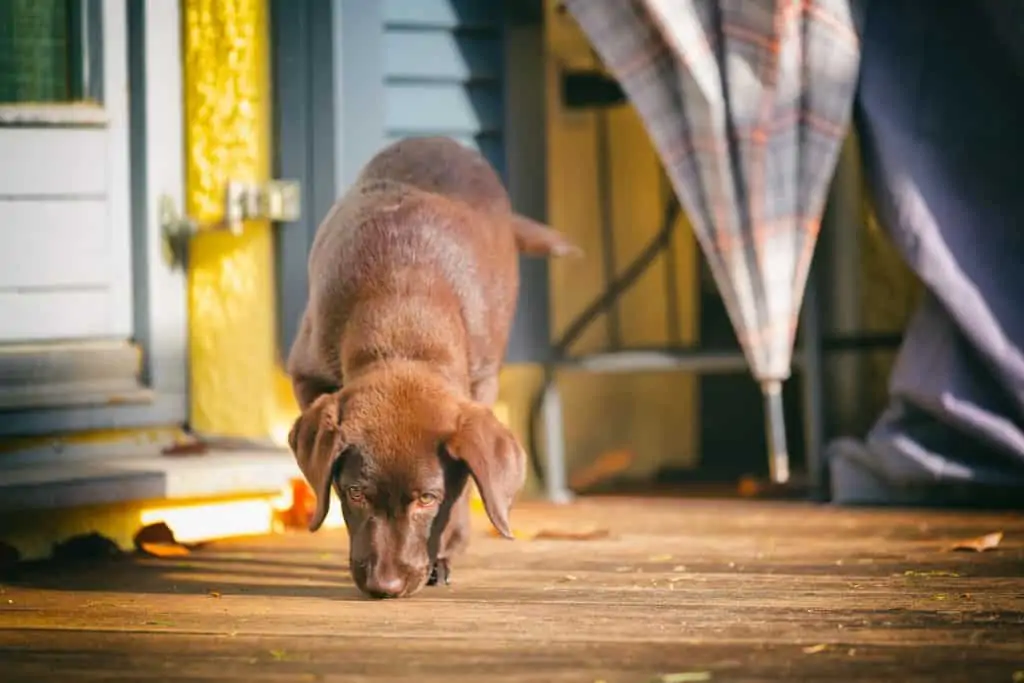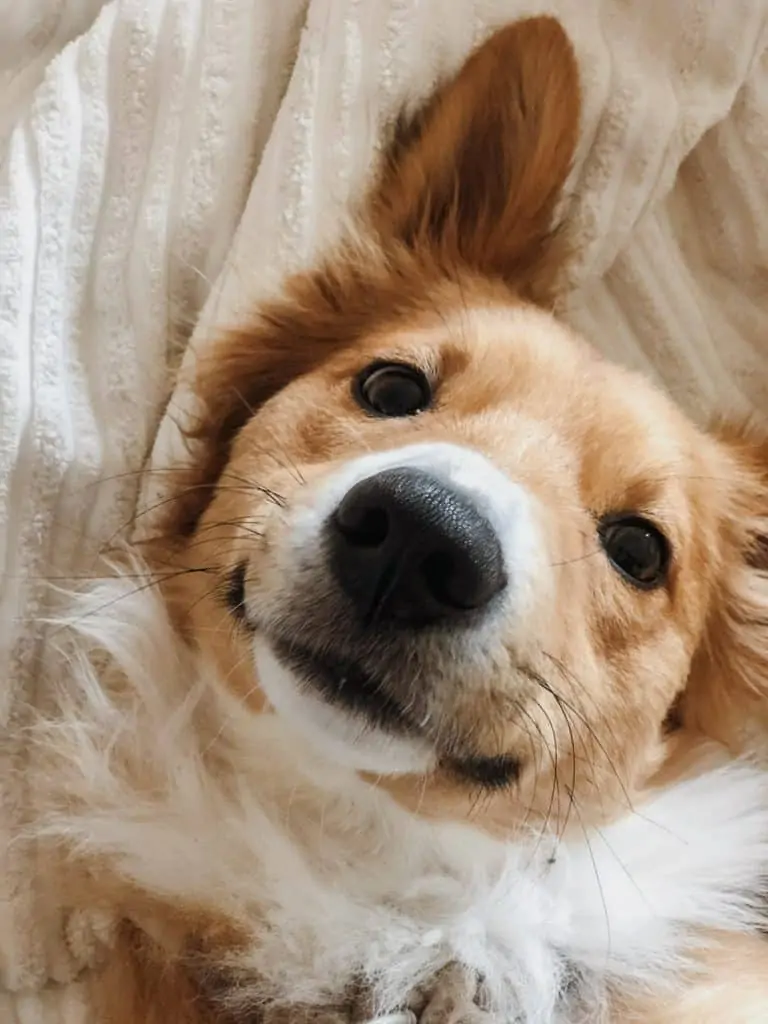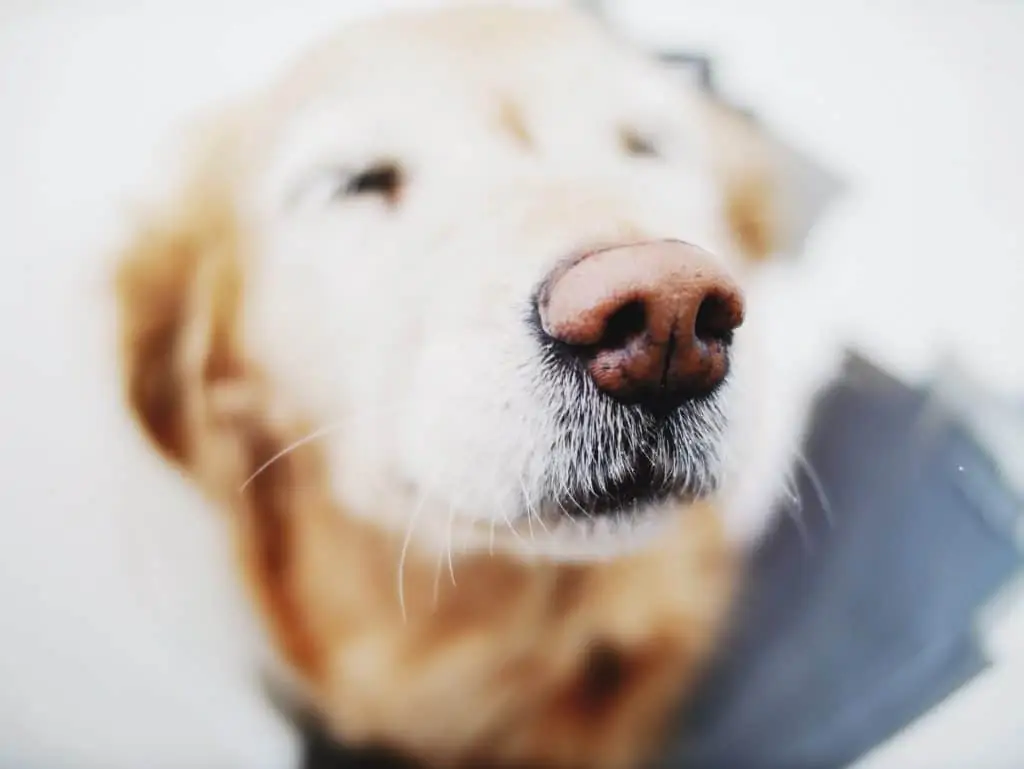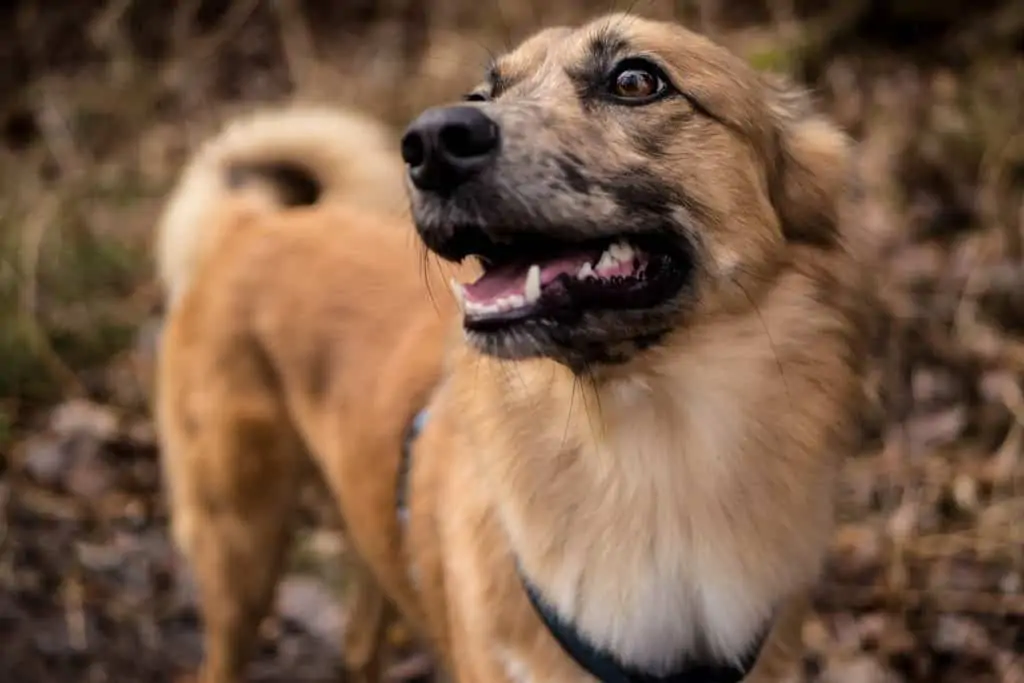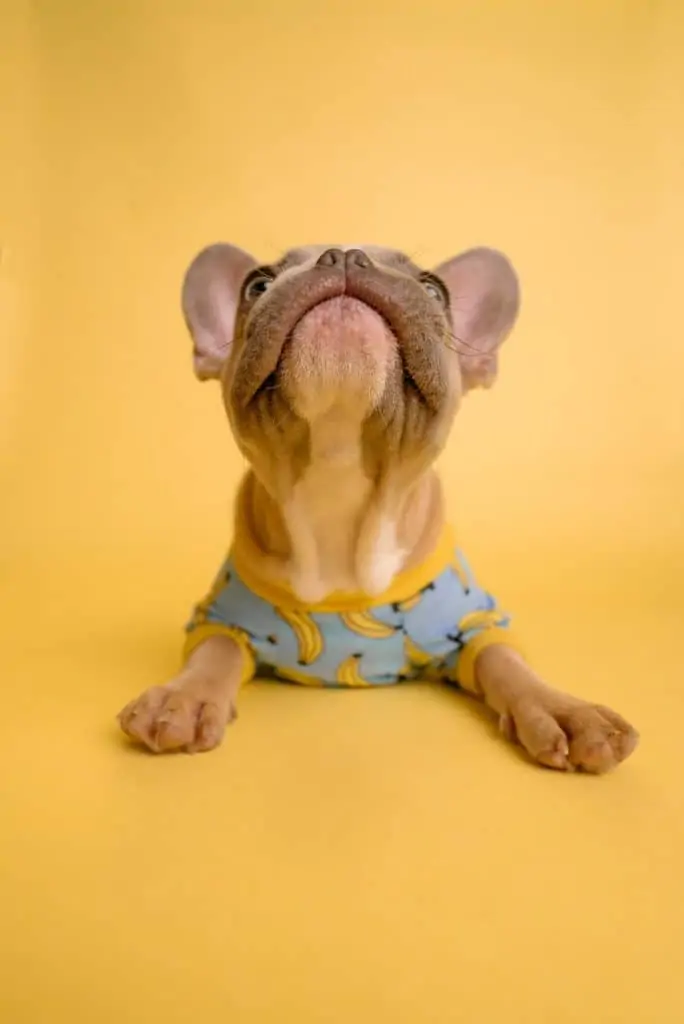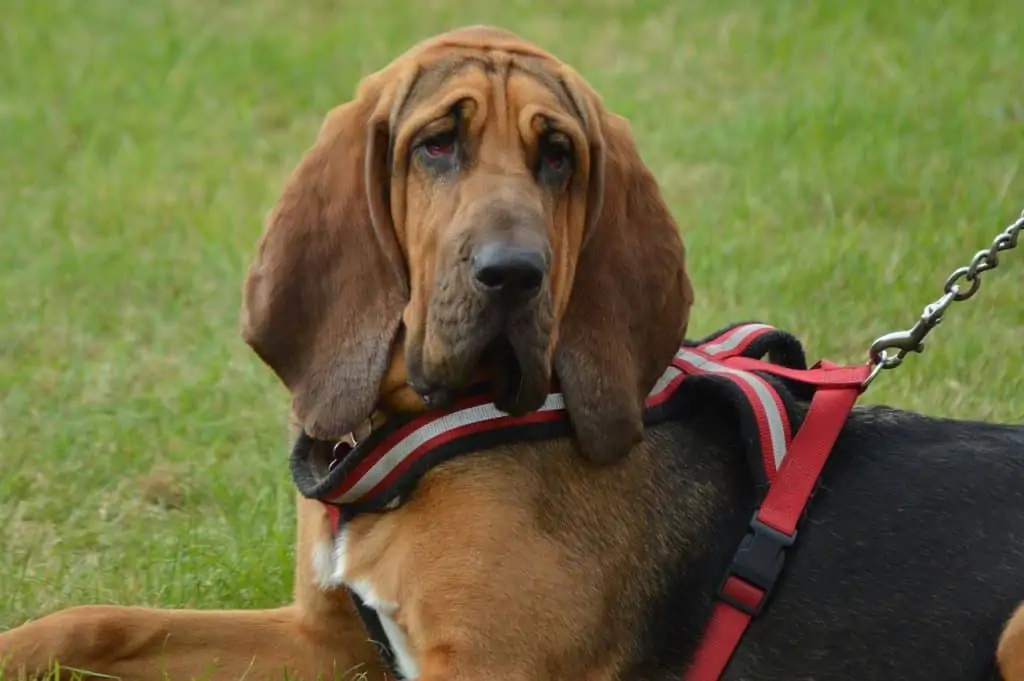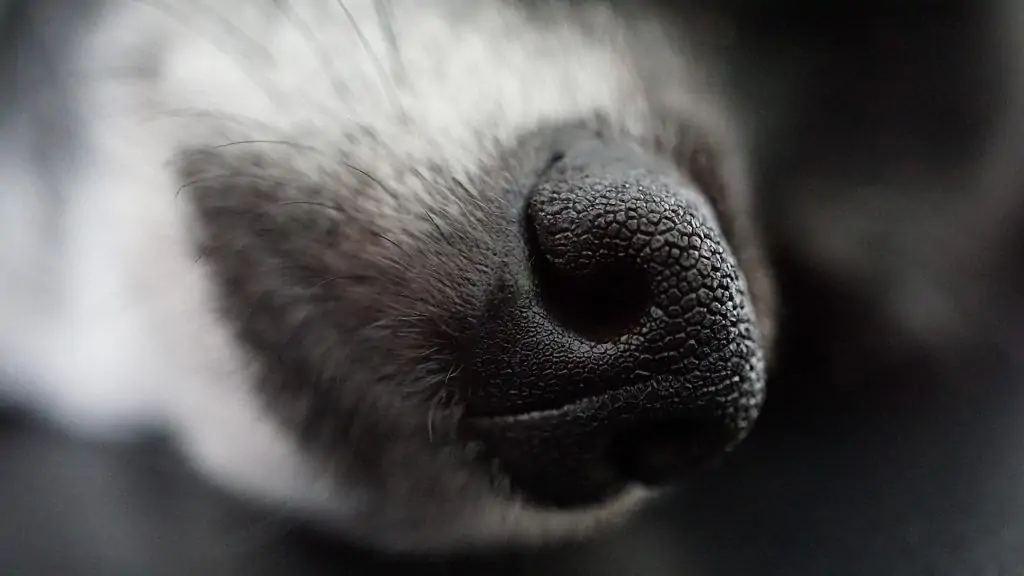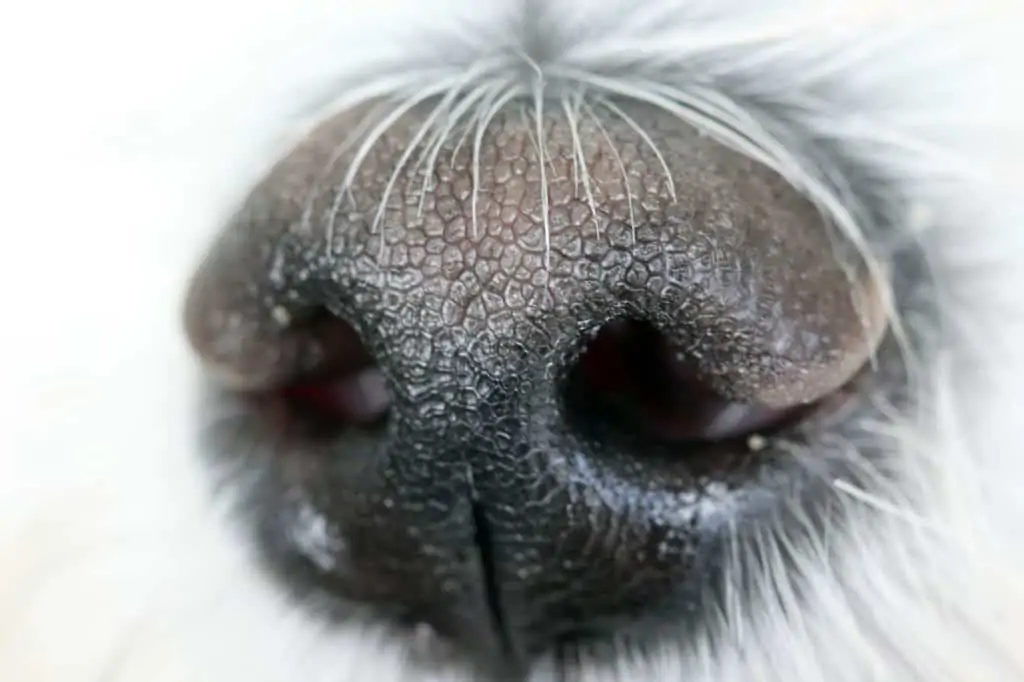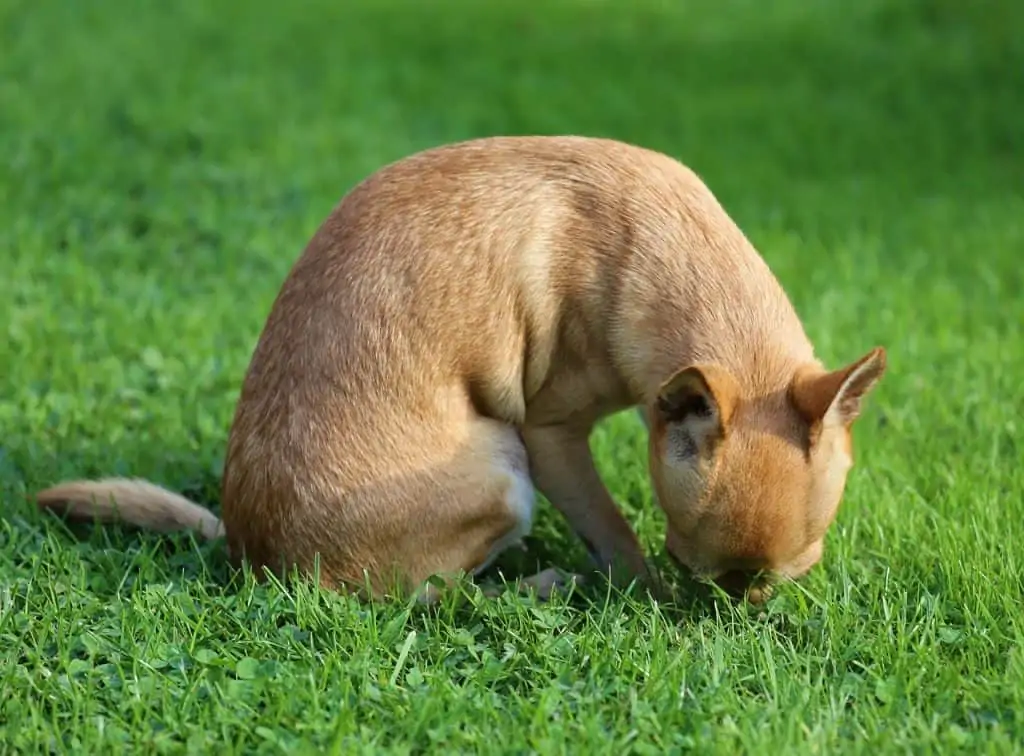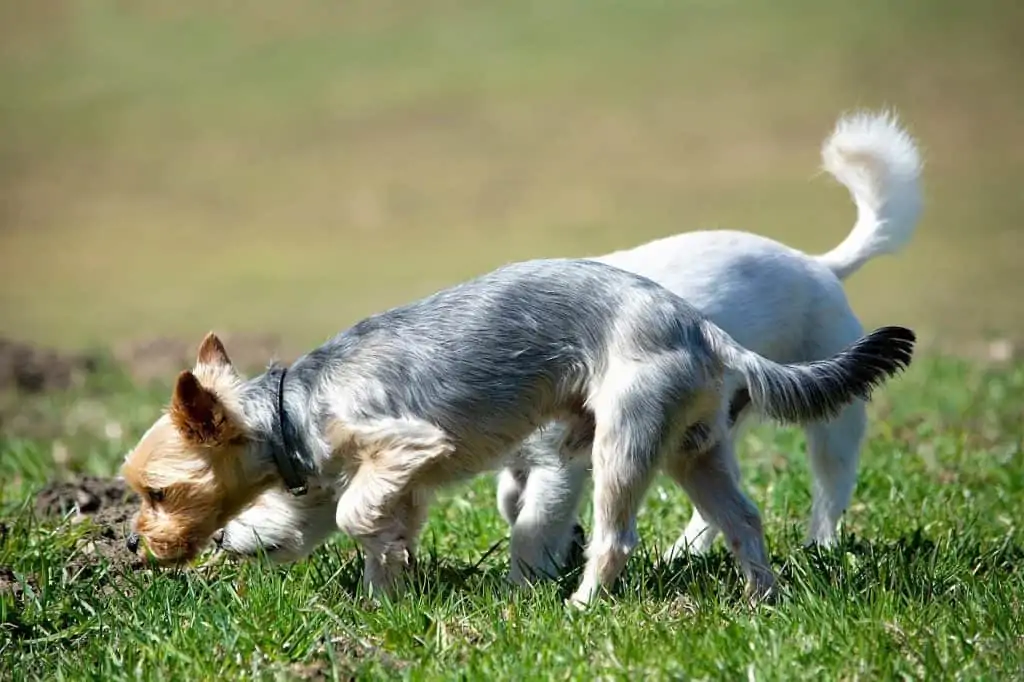What’s your favorite body part on your dog? His squishy paws? His soft ears? His little button dog nose? It can be difficult to decide when there’s just so much to love!
Have you ever taken a moment to really think about these doggy parts and the roles they play in your dog’s life? If not, then settle in because we’re about to blow your mind.
We’ve covered the function of your dog’s paws in a previous article, but today’s article is dedicated to an even more astounding body part on Fido – his amazing nose!
Here are 15 things you should know about the dog nose. Take a look!
Contents
1. The Dog Nose Has Six Different Parts And His Nostrils Can Each Smell Separately
Your dog’s nose consists of six different parts on the outside, and each part plays an important role.
As a whole, the dog nose is one cute little feature. But did you know that the canine sniffer has six different parts? Each part of the dog nose plays an important role in how a dog interprets scent, transfers information to the brain, and communicates with other dogs.
Let’s break it down.
The Rhinarium
The rhinarium, or the outside skin of your dog’s nose, is what is also sometimes called “nose leather”. This is the hairless part of your dog’s nose as a whole; that cute part of his nose that is either black, brown, tan, or pink, depending on his breed.
In fact, some dogs have a rhinarium that is considered a Dudley, which is a nose that is entirely pink. A Dudley rhinarium color is actually a disqualifying feature, according to a number of canine clubs, so even if your dog is a show quality purebred, that Dudley nose will mean he can’t compete in show or dog sports.
The Philtrum
The philtrum is an area of the nose that is present on both dogs and people. This is that part of flesh between your nostrils, or your dog’s nostrils. For dogs, a philtrum is an important part of his dog nose. In fact, it helps your dog keep his nose moist by collecting saliva when he licks it.
When he licks his philtrum, moisture from the mouth travels to the rhinarium, which helps enhance your dog’s ability to smell.
Two Nostrils
Your dog’s nostrils, also called nares, are considered two different parts of your dog’s nose because they each function separately. His nasal cavity is divided into two parts inside his nose and each nostril can wiggle independently from one another.
More amazingly, each of your dog’s nostrils can take in individual smells. When your dog is sniffing, he inhales particles in the air and traps them inside his nasal cavities with mucus. This mucus contains scent receptors, which go about processing these scents and transferring the smells to your dog’s brain.
Each smell that is trapped in your dog’s nostrils can communicate a wide variety of information about the world around him, almost like an entire language spoken by the earth that only your dog can understand.
Two Slits
Just as the dog nose nostrils play an important and individual role, so do your dog’s nose slits. These little slits on the side of his nose allow for excess air to escape while trapping the scent particles inhaled.
Because smell is such an important part of being a dog, these two slits are vital to the dog nose function. In fact, without them, the smell particles would simply escape with the air your dog exhales.
2. A Dog Nose Is 40 Times More Powerful Than A Human Nose
Your dog can smell at least 40 times better than you.
Olfactory receptors, sometimes known as odor receptors, are what make it possible for us and animals to detect odor. When an odor is picked up in the air by the olfactory receptors, the receptors then trigger nerve impulses that allow our brain to detect smell.
The more olfactory receptors a person or animal has, the better off their sense of smell is.
Humans have around six million olfactory receptors in our noses, while dogs have upwards of 300 million. Not only that, but their olfactory cortex – the part of the brain that interprets smell- is about 40 times larger than our own. Wow!
With that noted, it’s no shock then that the dog nose is so powerful that it can out-perform even man-made instruments designed for detecting odor. In fact, dogs are capable of detecting a scent that is up to 12 miles away.
That said, not all noses are created equal. Some breeds are better equipped at putting their dog nose to work. Some of the top breeds utilized for their amazing sense of smell include:
- The German Shorthair Pointer
- The Beagle
- The Bloodhound
- The Coonhound
- The English Springer Spaniel
- The Belgian Malinois
- The German Shepherd
- The Labrador Retriever
- And The Basset Hound
Of these dogs, the Bloodhound is perhaps the most talented when it comes to putting his dog nose to good use.
It has been found that the Bloodhound has the largest number of olfactory sensors of any breed, which means he’s at the tippy top with 300 million olfactory sensors used for sniffing. This makes the Bloodhound an ideal tracking dog used both for police work, military work, hunting and more.
3. Your Dog Uses His Nose For More Than Just Smelling
Dogs have long helped humans sniff out things we couldn’t.
As we mentioned briefly above, the dog nose can outperform any man made instrument used to detect odor to date. It’s no wonder we humans have decided to employ our canine counterparts for their incredible sniffing abilities!
Your dog’s nose likely evolved to be such a powerful smelling machine thanks to his wild ancestors. Wild dogs once had to use their noses to sense danger, find food, and communicate with one another. And once humans discovered how incredible the dog nose really was, we quickly found use for it as well.
Dogs have been utilized for centuries for working purposes and therapy services, but a dog nose is perhaps most remarkably used for one of the most amazing jobs of all – sniffing out medical issues in humans. Dogs have been employed to help sniff out different types of cancers, including breast cancer, ovarian cancer, bladder cancer and lung cancer.
They can also help find missing people, perifinailia, bombs, and other things simply by tracking the scent left behind in the air. How amazing is that?
4. A Blind Dog With A Good Nose Is Hardly Bothered
Blind dogs can often go on to live a normal life, as they use their nose to give them so much information.
When a human loses their vision, much of their life will need to be adjusted to accommodate the absence of such a major sense. When a dog loses their vision, they can adapt much more easily.
Dogs rely far more on their nose than their eyes to provide information to them about their world, from what’s coming around the corner to who or what has been in the room before them.
Many dogs are also able to sense emotions with their dog nose, so while they are excellent at reading our body language and facial expressions, they can also smell how we are feeling.
This is why a blind dog will still be just as intune with you as a seeing dog. And we love this adorable fact.
5. Dogs Have A Vomeronasal Organ, AKA A Second Nose
Dogs have an organ that they can use like a second nose. No wonder their sense of smell is so good!
The Vomeronasal organ, also known as the Jacobson organ, helps act as a second nose for dogs. It includes even more sensory cells inside the nasal cavity and helps dogs detect certain pheromones. These homeone-like scents are released by dogs and help communicate quite a bit of information.
So, in essence, dogs use their noses not only to smell, but also to gather a whole lot of information about the emotional and physical well being of their other canine counterparts.
When your dog sniffs another dog’s bum, he’s actually collecting quite a bit of data in that second nose. This is because each dog’s anal glands produce a unique secretion to that dog, which allows for other dogs to determine gender, age, health, emotion and more.
It may sound gross to us, but for a dog, this greeting is like a friendly handshake.
The Vomeronasal organ is yet another reason why blind dogs do so well without their sense of sight. They can easily tell if they have met another dog before or even smelled that dog’s scent in passing by collecting information from the secretions of the anal glands.
But while all dogs have a “second nose” by way of the Vomeronasal organ, some dogs also physically have a second nose.
Yes, you read that right. Some dogs actually have two noses. Some rare breeds designed to have a double nose include dogs like the Double Nosed Andean Tiger Hound, the Catalburun Dog, and the Pachon Navarro.
6. When Your Dog Chatters His Teeth, He’s Often Activating His Nose
Chattering teeth could be a sign that your dog is really getting a good sniff going.
For humans, teeth chattering usually means we’re cold or anxious. For dogs, teeth chattering can help drive scent up into the incisive papilla.
The incisive papilla is a small, fleshy bump on the roof of your dog’s mouth covered in a mucous membrane designed to further collect and distinguish smell. Humans have a papilla too!
To find yours, press your tongue up to your two front teeth. That small little fold of skin is your papilla.
Your dog’s incisive papilla is in the same area, though his is more functional and powerful than our own. And when he chatters his teeth, he’s activating his papilla, which enhances his ability to smell and can even provide a much greater amount of information based on the scents he is retrieving.
7. A Dry Nose Does Not Equal An Unhealthy Nose, In Spite Of Some Myths
Although a dry dog nose isn’t something to be concerned about, a cracked, crusty or otherwise abnormal looking nose is.
There was once a time we thought that a dry dog nose was an unhealthy dog nose. This myth has since been debunked and we now know that a dry nose is completely normal in dogs, so long as it’s not accompanied by other symptoms.
A hot, dry nose can be a concern and mean a few different health issues, including allergies, fever, and more if it is accompanied by a dog that is acting lethargic or otherwise unwell.
According to the American Kennel Club, if your dog has a crusty, cracked, or otherwise abnormal looking dog nose accompanied by other concerning symptoms, it’s important to contact your veterinarian.
Some symptoms of an unhealthy dog nose include:
- Cracks
- Sores
- Cuts
- Lumps
- Excess Nasal Discharge
- Wheezing
- And Sneezing
If your dog’s nose just looks strange or abnormal to you, but doesn’t quite line up with the above symptoms of dog nose red flags, it’s still wise to contact your vet. As we now know, the dog nose is an important and vital part of your dog’s body, and being intune with it could help you determine quite a bit about your dog’s health.
Other health issues or dangers to your dog’s nose you should look out for include:
- Foxtails
- Aspergillosis (when your dog inhales a fungi from vegetation or soil)
- Depigmentation (When your dog’s nose changes color)
- Rattle Snakes (while dogs can smell rattlesnakes, they dogs don’t have a natural fear of them, which is why many dogs are bitten.)
- Nasal Mites
- Nosebleeds (Chronic nosebleeds could be a sign of an illness like damaged blood vessels, infections, cancers or even Von Willebrand’s disease)
- Rhinitis (Inflammation of the nose)
- Reverse Sneezing
- And Sunburn
Yes, a sunburn on your dog’s nose is quite common. Many people don’t think about dogs getting sunburns, but their skin is really not much different from our own. Dogs with lighter colored noses are especially susceptible to sunburn, but all dogs can benefit from some nose protection when it comes to those UV rays.
My Dog Nose It Sun Balm
No products found.
We are big fans of the above dog nose sun protection balm by My Dog Nose It. This balm not only helps protect your dog’s nose from the harmful rays of the sun, but it also helps moisturize it and reduce cracking and dryness.
This balm is affordable, made with dog-safe ingredients, and easy to apply to your dog’s nose.
8. Your Puppy’s Nose Could Make Potty Training Tough
If puppies smell old urine in the home, they’ll be tempted to go in that same place over and over again.
Dogs can smell where they already went to the bathroom, and this smell can attract them to go to the bathroom in that same area again. This is why it’s so important to carefully clean up accidents inside your home. It’s also important to clean up any accidents outside of your home in areas you don’t want your dog to go potty.
In fact, most experts agree that if you’re aiming for your dog to go to the bathroom in a specific location, use his nose to your advantage.
OUT! Go Here Potty Training Spray
No products found.
This amazing spray by OUT! Allows you to use that dog nose to your advantage. Take what your dog does naturally, which is sniff, and help communicate to him using odor where he should go instead of where he shouldn’t.
Positive reinforcement and teaching your dog what to do as opposed to what not to do has statistically been proven to work more efficiently and effectively when it comes to training.
Using this type of spray to mark the spots your dog should go potty, along with using lots of treats, praise and encouragement, can help cut your potty training time in half.
9. It’s Been Suggested That Dog’s Can Tell Time
Some experts think that dogs can “smell” time.
Dogs may not be able to tell time on a watch, clock or smartphone, but some studies have suggested that dogs may actually be able to smell time as it passes. This makes sense, when you consider the amazing power of a dog nose and all the incredible smells it can detect.
To dogs, different times of day will smell different. For example, the morning may smell like coffee, shampoo, car exhaust and other morning smells you can’t even detect but your dog can as the day begins.
The same goes for the afternoon, evening and nighttime. Through his sense of smell, it’s possible your dog knows your routine, when you’re likely to be home for work, when dinner time happens, and what time he goes for his daily walk.
For example, if you hire a dog walker and that walker comes at the same time every day, your dog will know it. Many people with professional walkers will point out that their dog suddenly gets up and waits by the door or window around the time their walker comes.
This is the same if your spouse or partner returns home from work at a certain time, or if children leave or arrive home from school at a certain time each day.
This is one of the reasons most dogs do best with routines. They, like us, like to know what to expect so that they can make their own little schedules.
During the pandemic, when many households were quarantined, a number of trainers reporterted an uptick in calls from owners experiencing behavioral issues with their dogs.
This is likely because, while dogs enjoy having their owners home, their routine was suddenly disrupted and their senses were now in overdrive.
Those smells they relied on to get through the day and help them tell time to determine what was to come were now completely out of whack, leading to a number of issues for pets and people alike.
10. Your Dog Can Probably Sniff Out A Pregnancy
Dogs can smell the subtle changes in hormones, and often know when a woman is pregnant.
If your dog can smell time, then it’s probably no big surprise than your dog can smell if someone close is pregnant.
Here’s the thing though – while your dog is amazing and that dog nose of his is equally cool, dogs probably don’t recognize that they are smelling a baby in that belly. What they are detecting are subtle changes to a woman’s hormones. They are also able to detect changes in body language, emotional cues, and the overall excitement in everyone’s energy.
Remember, dogs pay very close attention to our body language and facial expressions, but that dog nose of theirs is also able to smell emotional changes like excitement, anxiety, stress, fear, sadness and joy.
If your dog is behaving differently around someone who is pregnant, it’s likely because he does know there is something special going on. But what he understands beyond that unique smell is still undetermined.
11. If Your Dog Has Jowls, He May Be A Better Sniffer
Bloodhounds have some of the strongest noses in the canine kingdom. Is this partly thanks to their jowls?
Remember how we discussed the Bloodhound being one of the top dogs when it comes to utilizing his dog nose?
While the Bloodhound is a sniffing star thanks to his abundance of olfactory glands, there is also a good chance that his saggy jowls help enhance his sense of smell even more.
Although this is still a theory, many experts believe that the saggy jowls in some dogs help to waft the smell particles in the air up to the nose while a dog is sniffing. This could mean that dogs like mastiffs, hounds, and other dogs with saggy jowls have a bit of an advantage when it comes to the function of their dog nose and how successfully they can smell.
12. Your Dog Can Decipher Individual Scents In Concentrations of One Part Per Trillion
In some ways, your dog’s sense of smell is almost like a shark’s.
Your dog’s nose is not only 40 times more powerful than your own, but it’s also able to detect different smells, even if the smells have been widely dispersed. According to experts, dogs can detect unique scents in concentrations of one part per trillion.
This would be the equivalent of a dog being able to sniff out a drop of soda in a 2,400 foot swimming pool. Of course, your dog can’t sniff under water. But in the air, he can sniff out just as far and just as specifically.
This is just one of the traits that make tracking dogs so successful, and why dogs are often employed for jobs in military work, police work, search and rescue work and more.
13. The Inside Of Your Dog’s Nose And Lungs Are Lined With Tiny “Brooms”
Your dog’s nose is perfectly designed to allow him to sniff without inhaling something dangerous.
These broom-like sensors are known as cila sensors, and they help detect and collect numerous particles in the air like debris, dust, pollen, and more. The structures are shaped like little brooms, helping them to cling to certain particles and then expel them from your dog’s nose and lungs when he sneezes.
This is especially helpful, considering your dog spends so much of his time sniffing. It’s easy for your dog to sniff debris, dirt, pollen and dust into his nose and lungs, and without his Cila sensors, he could get very sick.
14. The Scents Around Your Dog Are Constantly Changing
Your dog may seem stunned by the smells in his own backyard, but that’s because every day the scents are new.
It may seem like no matter how often you take your dog outside, even if it’s in his own backyard or down the same path you take day and night for walks, your dog is a sniffing maniac. While you may be used to the sights, sounds and smells you come across in these familiar places each day, to your dog, his world is forever-changing.
Because your dog relies so heavily on his nose to receive information, his world is constantly new – even if he was just in the same area five minus earlier.
Every sniff tells him a new story about who or what was there before him, and he simply cannot ignore his natural instinct to sniff and retrieve all this amazing information.
15. Dogs Really Enjoy Sniffing, So Let Your Dog Be “Nosey”!
Smelling helps keep your dog happy both physically and mentally.
Sniffing is more than just an instinctual and natural pastime for your dog. The action of sniffing helps transmit information and can even help increase your dog’s overall health and happiness.
Walks and outings where your dog is allowed free sniff time can help increase optimism and mental soundness, alleviating anxiety, stress and boredom. When dog walks are full of sniffs, they can help ensure your dog is more fulfilled afterwards both physically and emotionally, which can reduce a variety of health and behavioral issues down the road.
To get the most out of your outdoor adventures with your dog, go when you have enough time to allow him to sniff. Remember, walks aren’t solely about exercising his physical body, but also exercising his mind as well. When your dog sniffs, he’s happier for it, which means you should definitely let him be a little nosey.
So, what did you learn today about the amazing dog nose? Did you have any idea your dog’s nose was so powerful?
Tell us what you think about the dog nose in the comment section below.
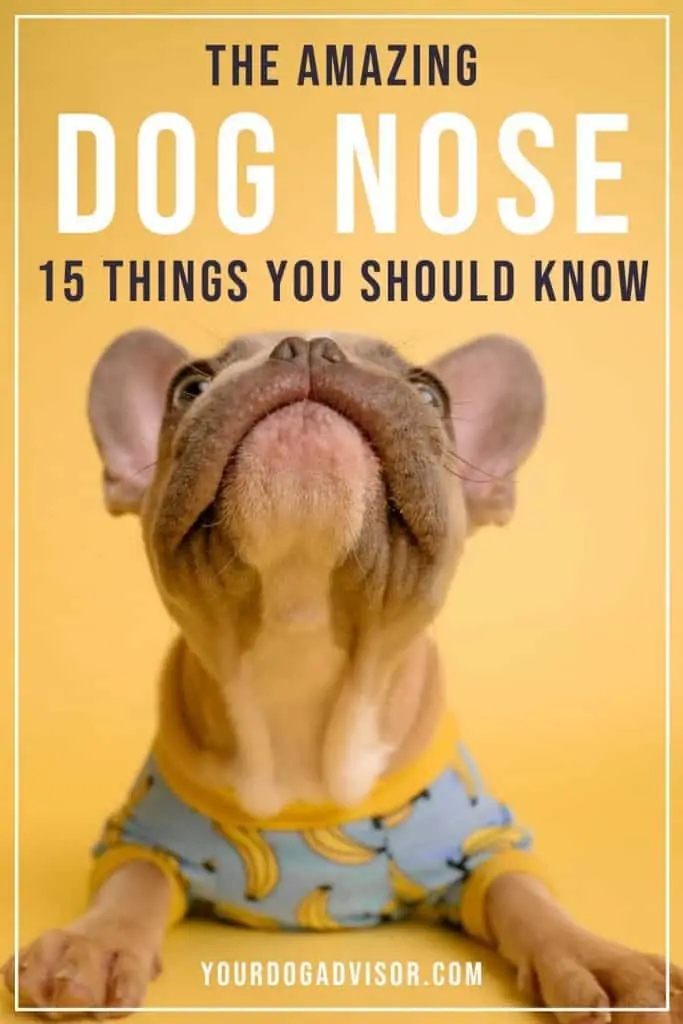

Jen Jones is a professional dog trainer and behavior specialist with more than 25 years of experience. As the founder of ‘Your Dog Advisor’ and the ‘Canine Connection’ rehabilitation center, she applies a holistic, empathetic approach, aiming to address root causes rather than merely treating symptoms.
Well known for her intuitive and compassionate approach, Jen adopts scientifically-proven, reward-based methods, encouraging positive reinforcement over punishment. Jen specializes in obedience training, behavior modification, and puppy socialization. Her innovative methods, particularly in addressing anxiety and aggression issues, have been widely recognized. Jen has worked with many of the world’s leading dog behaviorists and in her free time volunteers with local animal shelters and rescue groups.

